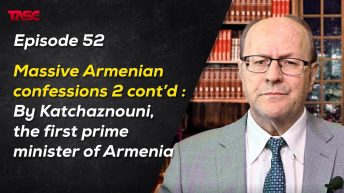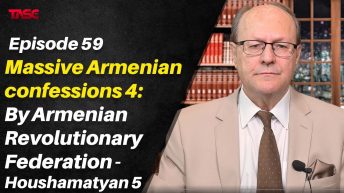Journalist Hans Barth dubbed Lepsius, “a vest-pocket Torquemada” in the book entitled “Turk, Defend Yourself!”, Leipzig, 1898, adding that the efforts of those like Lepsius amounted to a “crusade.” Torquemada was a Castilian Dominican friar and first Grand Inquisitor in the Spanish Inquisition of the 14th and 15th centuries, persecuting Muslims and Jews in Spain. Owing to his widespread use of torture to extract confessions, and advocacy of burning at the stake those deemed guilty, Torquemada’s name has become synonymous with cruelty, intolerance, and fanaticism. So, “vest-pocket Torquemada” can be translated as “a miniature villain”, “a tiny monster.” Johannes Lepsius, born in 1858, in Potsdam, Germany, was a German Protestant missionary and an orientalist, in the sense explained by Edward Said in his 1978 book entitled Orientalism. Lepsius portrayed “The East”, that is the Orient, condescendingly. Lepsius studied mathematics and philosophy in Munich and a received a PhD in 1880. He was one of the founders and the first chairman of the German–Armenian Society. Predisposed to Islamophobia, he published his work during WWI which translates as “Report on the situation of the Armenian People in Turkey” in which he used insulting terms for all Turks and exalting ones for all Armenians, in embellished stories mostly fed by the equally orientalist Morgenthau. A second edition also in German, which translates as “The way to death of the Armenian people,” included an imaginary interview with Enver Pasha, the Minister of War for the Ottoman Empire during the World War One. Lepsius’ wife, Margaret Zeller, came from the internationally known missionary family and the two met in Ottoman Jerusalem. Johannes Lepsius house museum, opened in 2011, Potsdam, Germany, in the house where Lepsius lived from 1908 to 1926, also serves as “Research Center for Genocide Studies” where mostly orientalists continue to interpret events with total disregard for the other side of the story and create black-and-white, simplistic, and dishonest historiography. The plain truth is, most Ottoman-Armenians, not all, chose to take up arms against their own state during a World War, attacked government facilities and personnel, murdered fellow citizens and non-combatant Turks, sabotaged army logistic facilities, joined the invading enemy armies, and posed a serious threat to the Ottoman war effort. When the mighty British-French armada boasting half a million soldiers descended upon Dardanelles in the West and Tsarist Russia invaded Ottoman lands in the East, the Ottoman Armenians, instead of helping the motherland caught in this terrible vise, chose to join the enemies! Turks only defenden their home. What did the Armenians expect in return? What would be an acceptable punishment for their supreme treason if not temporary resettlement (or TERESET) to Northern Syria? During such a turbulent time, Lepsius founded the so-called humanitarian relief activities but only to help Christians. Muslim suffering meant nothing to Lepsius and he could not care less about the Turkish deaths. To Lepsius, the word human meant Christians only, not Muslims or Jews. One of Lepsius’ works, “Germany and Armenia 1914–1918: Collection of Diplomatic documents” is hailed as “the main document on the (alleged)Armenian genocide.” The question begs to be asked is, if they were so factual, then why did the Armenians not use them to sue for genocide recognition since this work’s appearance in 1919? And why did the British crown prosecutors not use them during the Malta Tribunal that started the same year and went on for two years? The short answer is that they all knew the Lepsius documents were part embellishments and part hearsay, none of which could withstand the scrutiny of a competent tribunal. After his report about the Armenian people in the Ottoman Empire was published, Lepsius went into exile in Holland, in 1916—to escape pursuit by the German police, according to an Armenian website. Due to the high regard held for Lepsius, the authenticity of the 444 documents published in ‘Germany and Armenia’ escaped scrutiny for a long time. Only after the Second World War, when the files of the German Foreign Office were made available to researchers of both world wars, some of the documents were discovered to have inconsistencies, abridgements, and even forgeries. Trying desperately to save Lepsius’ credibility and integrity, the Armenians claim that it was not Lepsius who manipulated the documents, but the German Foreign Office. Lepsius had not set foot in Anatolia, had not talked to one single Armenian there. All the information he gathered consisted of what he learned from the Patriarchate and to some extent the reports shown him by Morgenthau.
Myths and Realities




Add comment